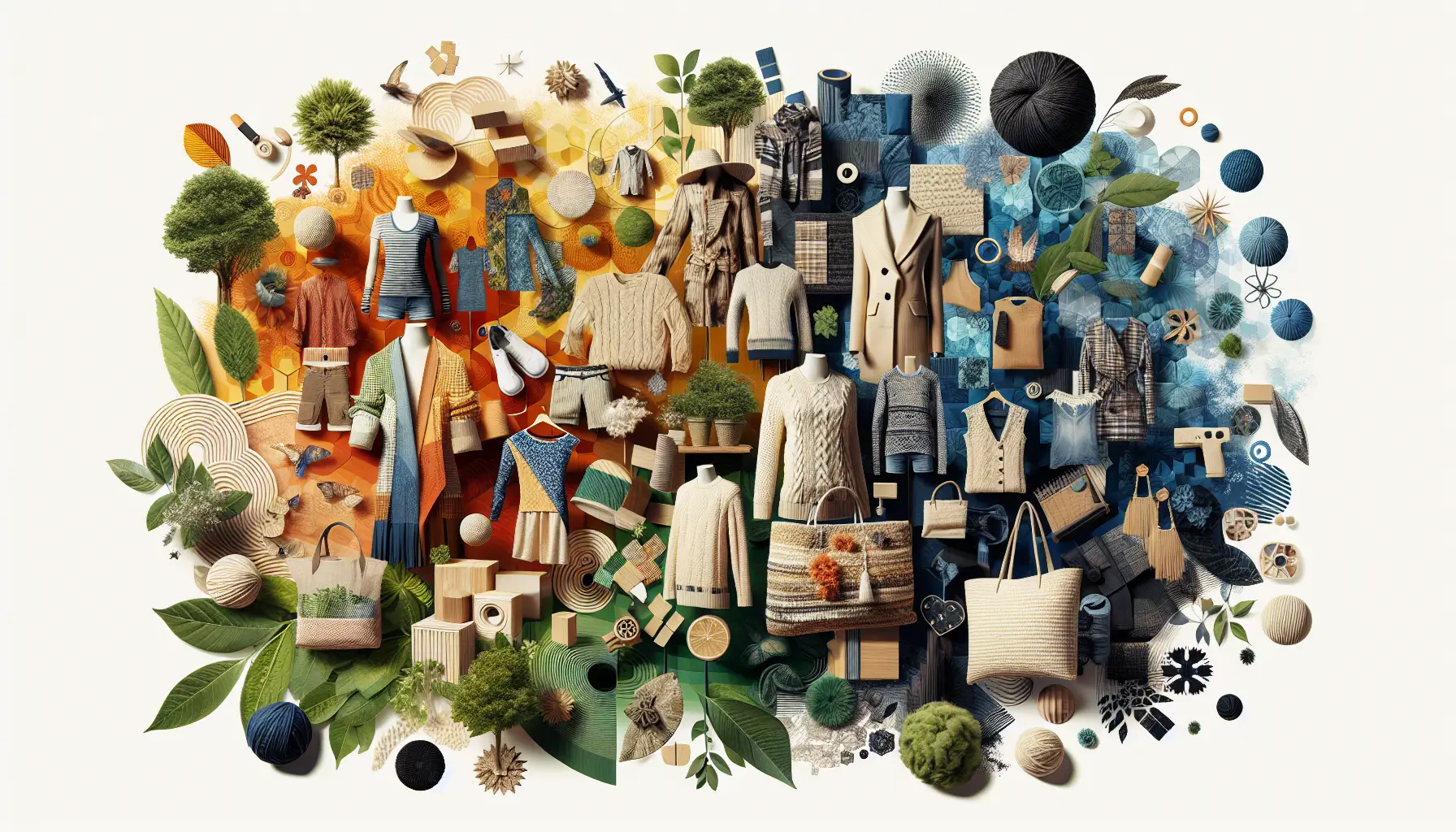Cape Town Sustainable Fashion Week: Highlighting Eco-friendly Innovations
Keep Ahead of the Curve by Discovering Cutting-edge Fashion Trends
In a sector as vibrant as fashion, remaining ahead involves more than just complying with existing fads-- it demands an exploration of development. The merging of innovation and fashion declares a new age of customer interaction.

Welcoming Smart Textiles
In recent times, the garment industry has actually experienced a transformative shift with the combination of smart textiles, an innovative innovation that blends innovation with material. This advancement stands for not only a fusion of appearances and capability yet additionally a significant leap in the direction of sustainability and customization in style. Smart fabrics, also called e-textiles, embed advanced electronics such as sensors and conductive strings within the fabric, allowing garments to engage with the atmosphere or the wearer.
These textiles are designed to keep track of physiological parameters, such as heart price or body temperature, providing real-time health analytics. Past health applications, smart fabrics are additionally being used for adaptive clothing, which can transform shade or pattern in reaction to environmental stimulations, thus supplying a vibrant fashion experience.
In addition, the advancement of energy-harvesting textiles that create power from motion or sunshine is leading the way for self-sufficient wearable modern technology. This advancement is attracting environmentally mindful consumers and developers aiming to minimize the ecological impact of fashion. As r & d in this field breakthrough, wise textiles are anticipated to end up being progressively widespread, reshaping the landscape of contemporary fashion with their multifunctional capabilities.
The Surge of 3D Printing
Transforming the production landscape, 3D printing has arised as a game-changer in the fashion market. This innovative technology has enabled developers to push the borders of imagination, generating complex and tailored garments that were previously unthinkable. By leveraging electronic layout and additive manufacturing, 3D printing promotes the development of complicated geometries and patterns, permitting designers to explore new appearances and structures.
A noteworthy advantage of 3D printing in fashion is its capacity to generate on-demand, decreasing waste and decreasing inventory needs. This effectiveness not only maximizes manufacturing processes however additionally enables quick prototyping, making it possible for designers to bring their visions to life in a much shorter duration. Additionally, 3D printing supports personalization somewhat unmatched by conventional methods, providing one-of-a-kind styles and individualized fits customized to individual customer preferences.
The surge of 3D printing has actually likewise equalized style, making it easily accessible to emerging designers that can now fabricate top quality items without substantial economic investment in standard production framework. As technology remains to advancement, the fashion market is positioned to harness the complete possibility of 3D printing, exploring new materials and techniques that will unquestionably redefine just how style is conceived and created.
Sustainable Fashion Advancements
As the apparel industry comes to grips with journalism demand for ecological obligation, lasting fashion advancements have arised at the leading edge of transformative modification. The growing awareness of ecological influence has actually fueled a change towards more eco-conscious practices and materials. Brand names and developers are now prioritizing sustainability, incorporating approaches that decrease waste and reduce carbon impacts.
One substantial growth is the rise of circular fashion, which emphasizes recycling and upcycling to expand the lifecycle of garments. This approach not just lowers waste yet also encourages customers to take on an extra conscious method to garments usage. In addition, using sustainable materials, such as natural cotton, hemp, and recycled polyester, has actually obtained grip. These materials need much less water and power throughout manufacturing, substantially lessening ecological effect.
Another breakthrough exists in the fostering of ingenious dyeing methods that make top article use of waterless processes or all-natural dyes, consequently decreasing the large quantities of water and chemicals generally utilized in textile dyeing. In addition, improvements in biotechnology have led to the production of lab-grown natural leather and textiles, providing ecologically pleasant and cruelty-free alternatives to traditional products. Via these introducing initiatives, the fashion industry is making significant strides in the direction of a more sustainable future.

Tech-Integrated Clothing
Tech-integrated apparel represents a revolutionary fusion of fashion and technology, improving just how people interact with their garments. This cutting-edge domain is marked by the addition of smart fabrics and embedded digital parts, improving both performance and aesthetic allure. From fitness trackers embedded in sports apparel to warmed coats managed via smartphone apps, tech-integrated clothing uses consumers unprecedented ease and versatility.
Introducing brand names are driving this fad, focusing on developing garments that react to environmental stimulations or individual commands. For circumstances, some garments can transform color or pattern in reaction to temperature level changes, while others incorporate biometric sensing units to keep an eye on health metrics like heart rate or tension levels. The smooth combination of technology right into textiles additionally includes environmental sustainability, with efforts to create self-cleaning fabrics or garments that readjust to weather, hence minimizing the demand for numerous layers.
Additionally, the advent of wearable technology is not just limited to apparel however expands to devices like watches and eyewear, more widening the scope of tech-integrated style. As the market remains to introduce, the capacity for modification and personalization in apparel grows, providing consumers one-of-a-kind, tech-enhanced style experiences that satisfy their individual requirements and choices.
Future of Virtual Fashion
In recent times, the future of digital style has emerged as a transformative pressure within the industry, leveraging advancements in digital innovation to redefine how style is produced, experienced, and taken in. By integrating increased reality (AR), digital reality (VR), and 3D design tools, designers can page now craft interactive and immersive experiences that transcend standard style boundaries. Digital style allows for the creation of garments that exist only in electronic atmospheres, providing unlimited possibilities for advancement without the restrictions of physical production.
This digital change not just offers possibilities for creative expression but additionally addresses sustainability issues intrinsic in traditional fashion practices. Cape Town Sustainable Fashion. By getting rid of the requirement for physical resources, virtual fashion minimizes waste and lessens carbon footprints. In addition, the rise of digital style lines up with the boosting customer need for customized and unique experiences, as virtual garments can be tailored and customized to private choices effortlessly

Conclusion
The fashion market's future lies in the assimilation of lasting methods and innovative innovations. Virtual style is poised to redefine customer interactions.
In recent years, the fashion sector has actually experienced a transformative change with the combination of smart textiles, a sophisticated development that blends innovation with fabric.As the style market grapples with the pushing demand for ecological responsibility, sustainable style technologies Source have actually emerged at the forefront of transformative modification.In current years, the future of online style has actually arised as a transformative force within the market, leveraging improvements in digital modern technology to redefine how style is produced, experienced, and consumed. The surge of virtual style straightens with the raising consumer need for tailored and one-of-a-kind experiences, as digital garments can be tailored and tailored to private preferences with simplicity.
The style sector's future lies in the assimilation of ingenious modern technologies and lasting methods.